IT visibility
What is IT visibility?
What is IT visibility?
IT visibility is the ability to have a comprehensive, real-time insight into an organization's entire IT estate. This encompasses everything from traditional on-premises hardware and software to cloud-based services, applications, and the vast array of interconnected devices known as the Internet of Things (IoT). This clarity ensures that businesses can proactively manage, optimize and secure their IT resources, fostering informed decision making, risk mitigation and strategic alignment with business goals.
Why is IT visibility crucial?
Why is IT visibility crucial?
- Strategic decision making: With a clear view of all IT assets, you can make decisions that align with their strategic goals, whether it's scaling operations, entering new markets or optimizing current resources
- Risk management: IT visibility allows for the early detection of potential vulnerabilities, outdated systems or compliance misalignments, ensuring timely remediation
- Cost efficiency: By understanding your full IT landscape, you can identify redundancies, underutilized resources or areas of potential savings
- Operational excellence: Clear visibility ensures that IT operations run smoothly, with reduced downtimes, efficient resource allocation and enhanced service delivery
How does IT visibility differ from traditional IT asset management?
How does IT visibility differ from traditional IT asset management?
While traditional IT asset management focuses primarily on tracking physical and software assets, IT visibility goes a step further. It provides insights into the relationships between these assets, their current status, potential vulnerabilities and their alignment with business objectives. It's a more dynamic, real-time and interconnected view of the IT estate.
How does the Internet of Things (IoT) factor into IT visibility?
How does the Internet of Things (IoT) factor into IT visibility?
The Internet of Things (IoT) refers to the myriad of interconnected physical devices that communicate and exchange data over the internet. These devices can range from everyday household items like smart thermostats to industrial machinery. As organizations integrate more IoT devices into their operations, the volume of data and the number of endpoints to manage and secure grow exponentially. Each IoT device collects data from its environment, adding to the vast pool of information that organizations must manage. Comprehensive IT visibility ensures that businesses can monitor, manage and secure these devices, making sure they align with overall business goals and strategies while mitigating potential risks.
What challenges arise from a lack of IT visibility?
What challenges arise from a lack of IT visibility?
In the absence of clear IT visibility:
- Organizations might face unexpected downtimes or service disruptions
- Security vulnerabilities could go undetected, leading to potential breaches
- IT teams might struggle with resource allocation, leading to inefficiencies
- Decision makers might lack the data needed to make informed strategic choices
Achieving comprehensive IT visibility
Achieving comprehensive IT visibility
Achieving comprehensive IT visibility requires a combination of advanced tools, well-defined processes and a culture of continuous monitoring and improvement. This involves:
- Implementing tools that can scan, detect and monitor all IT assets in real time
- Establishing processes to regularly update, validate and clean IT data
- Fostering collaboration between IT teams, decision makers and other stakeholders to ensure that IT insights translate into actionable business strategies
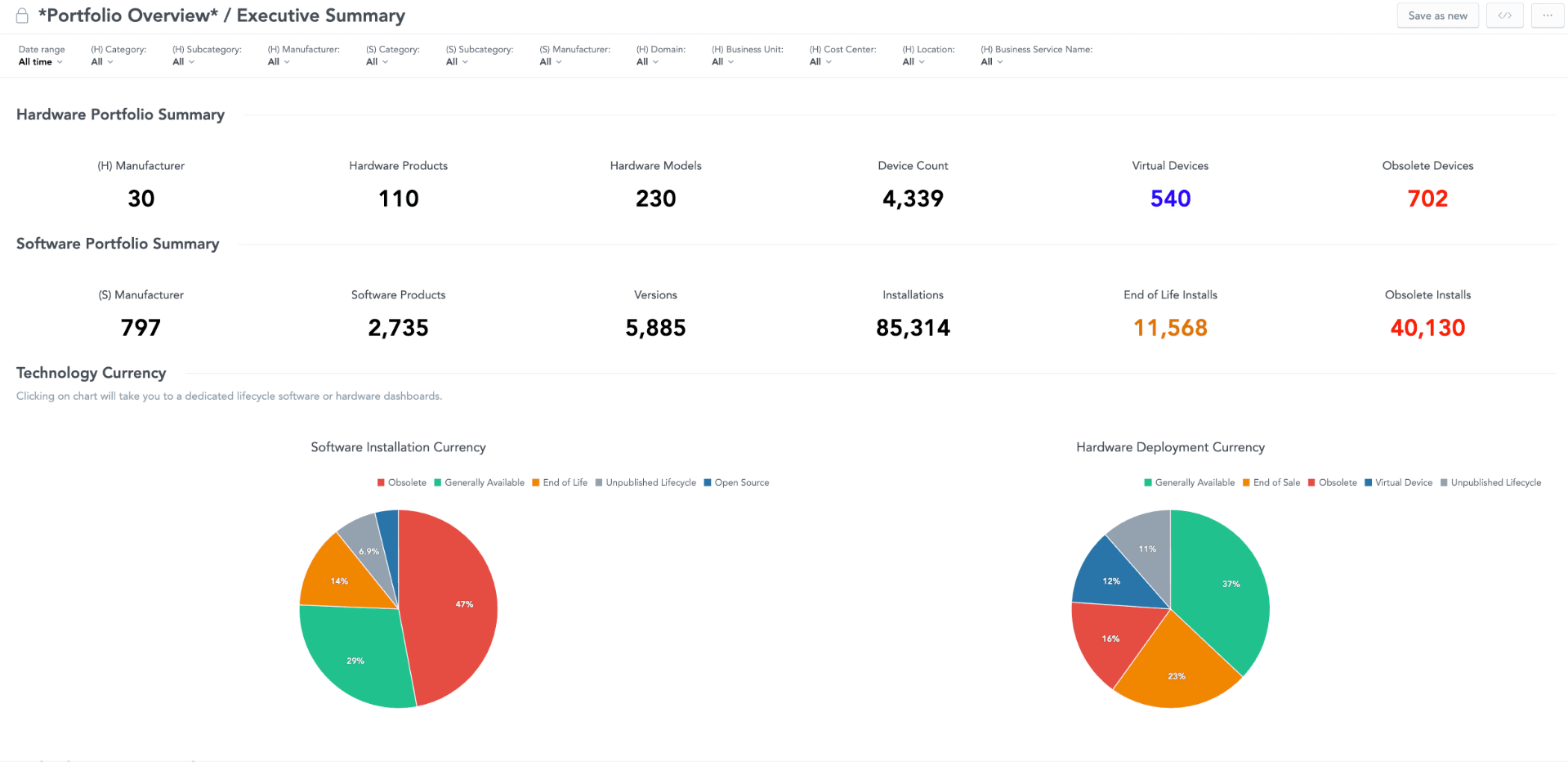
Example provided by Flexera One: IT Visibility
IT visibility helps address tech debt and obsolescence
IT visibility helps address tech debt and obsolescence
Obsolete or outdated hardware and software can cause significant risks and lead to unexpected expenses. Visibility into these assets helps you proactively address issues, plan financially for tech debt and keep your IT estate evergreen. Essentially, it's about staying ahead of the curve and avoiding the pitfalls of outdated technology.
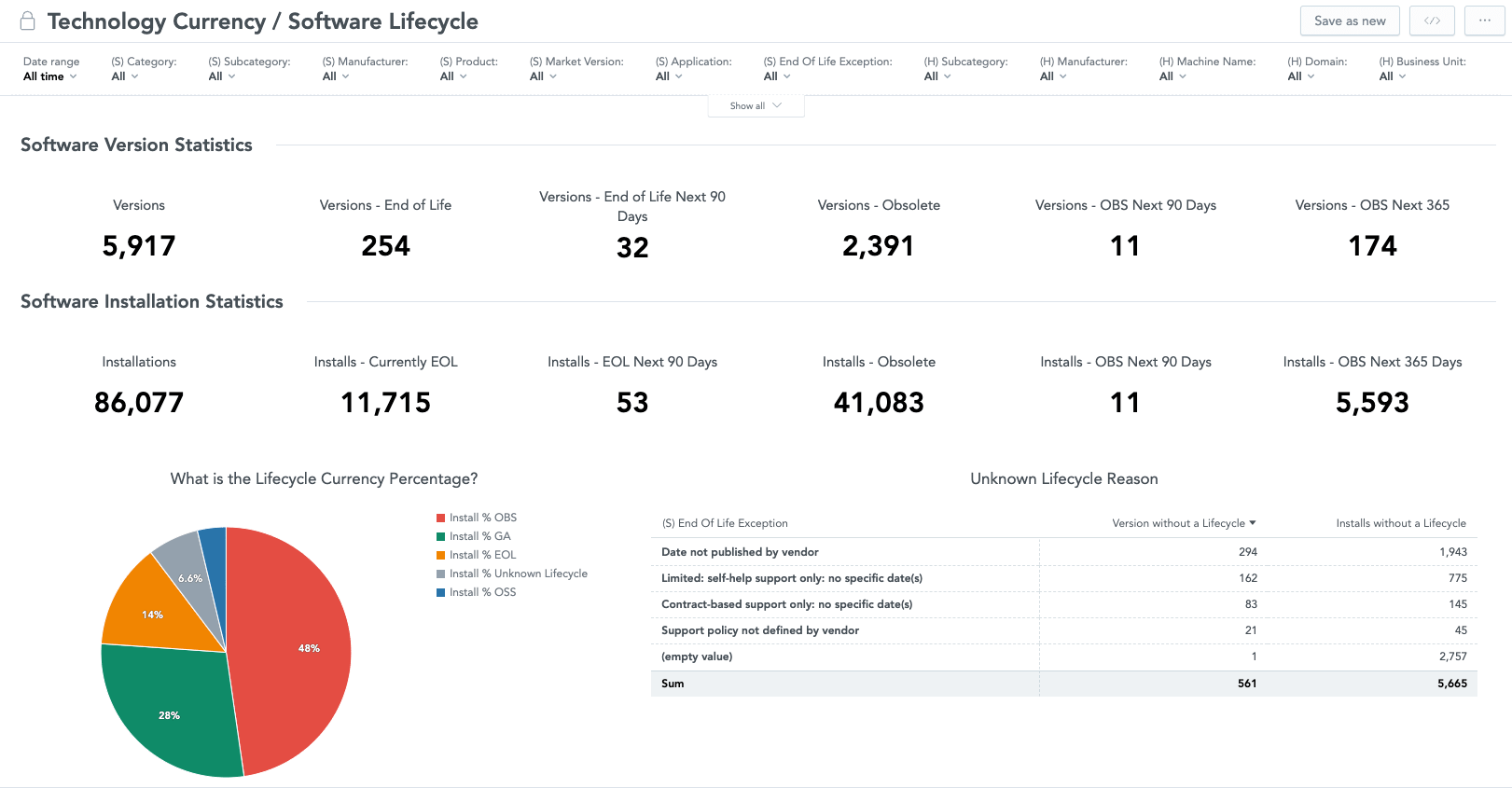
Example provided by Flexera One: IT Visibility
Why is portfolio rationalization crucial for IT visibility?
Why is portfolio rationalization crucial for IT visibility?
IT sprawl isn't just a logistical issue; it's a cost and operational concern. Portfolio rationalization groups similar items together, giving you clear insight into potential action areas. By standardizing and right-sizing applications, businesses can drive cost savings beyond traditional software asset management license optimization. It's about ensuring that you have what you need, without excess that can bog you down.
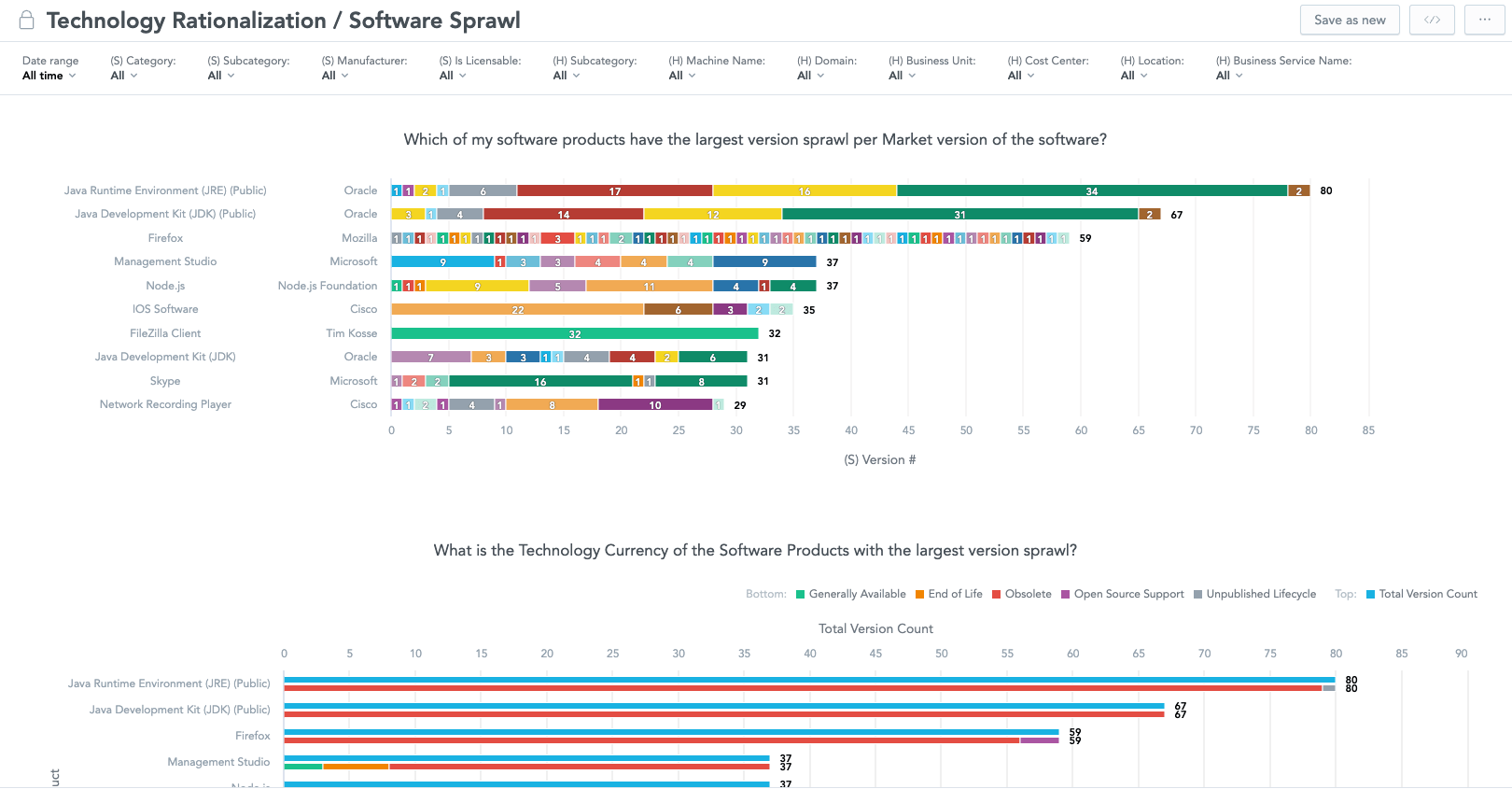
Example provided by Flexera One: IT Visibility
How does recognizing software vulnerabilities enhance IT visibility?
How does recognizing software vulnerabilities enhance IT visibility?
Security isn't just the responsibility of the security team—it's a company-wide concern. Recognized vulnerabilities in software present potential risks. By providing prioritized insights into installations at risk, IT visibility allows you to proactively address these vulnerabilities. In correlation with obsolescent software data, this can drastically reduce security risks, ensuring that your IT estate isn't just functional but also safe.
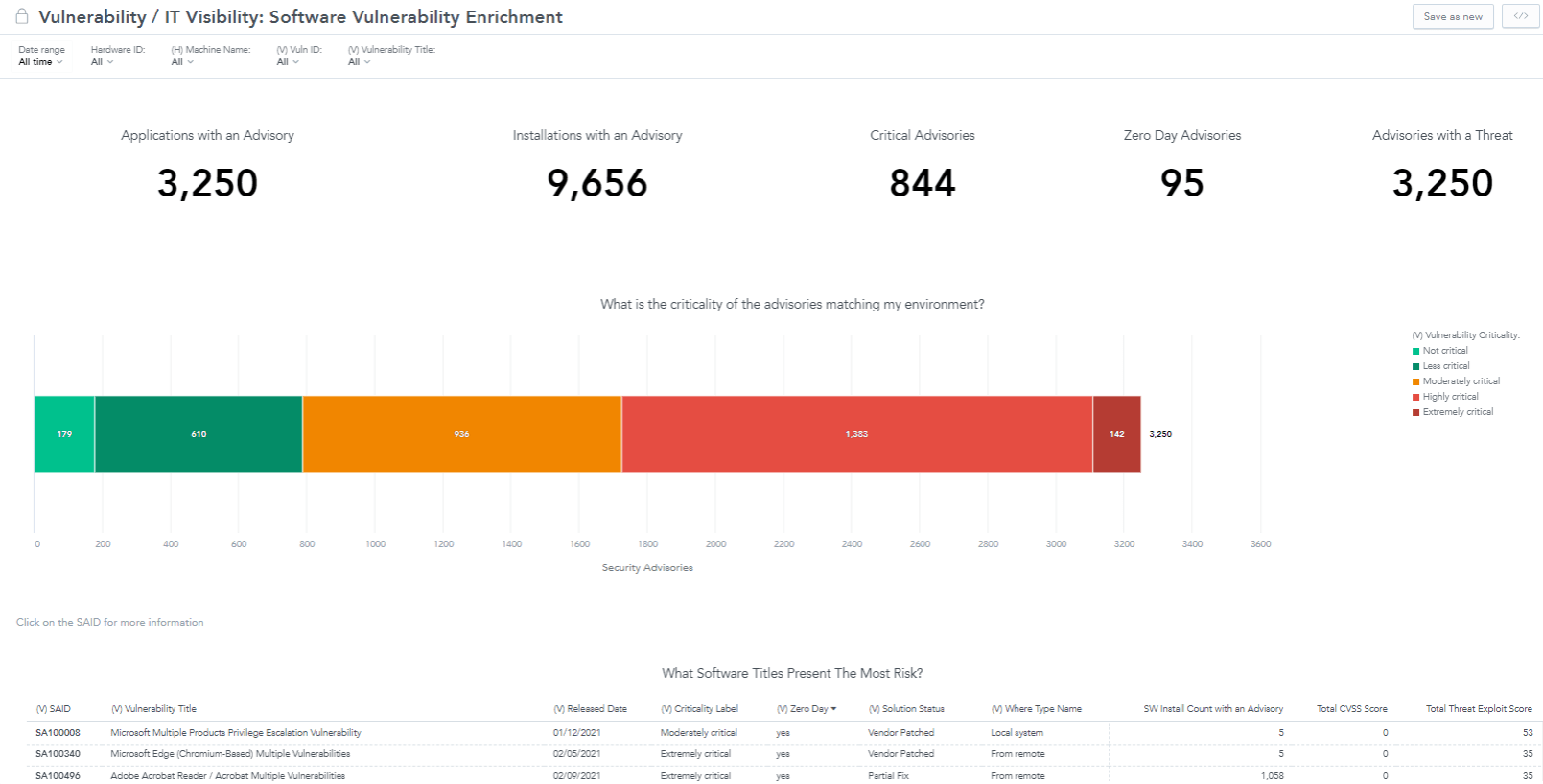
Example provided by Flexera One: IT Visibility
The role of CMDB enrichment in IT visibility
The role of CMDB enrichment in IT visibility
Configuration management databases (CMDBs) can often be dynamic and unreliable. But as organizations incorporate more inventory sources, the complexity can escalate. Through CMDB enrichment, IT visibility provides clean, curated datasets to update and enhance the value of the CMDB without compromising its authoritative position within IT service management. This ensures that the CMDB remains a reliable source of truth for the IT estate.
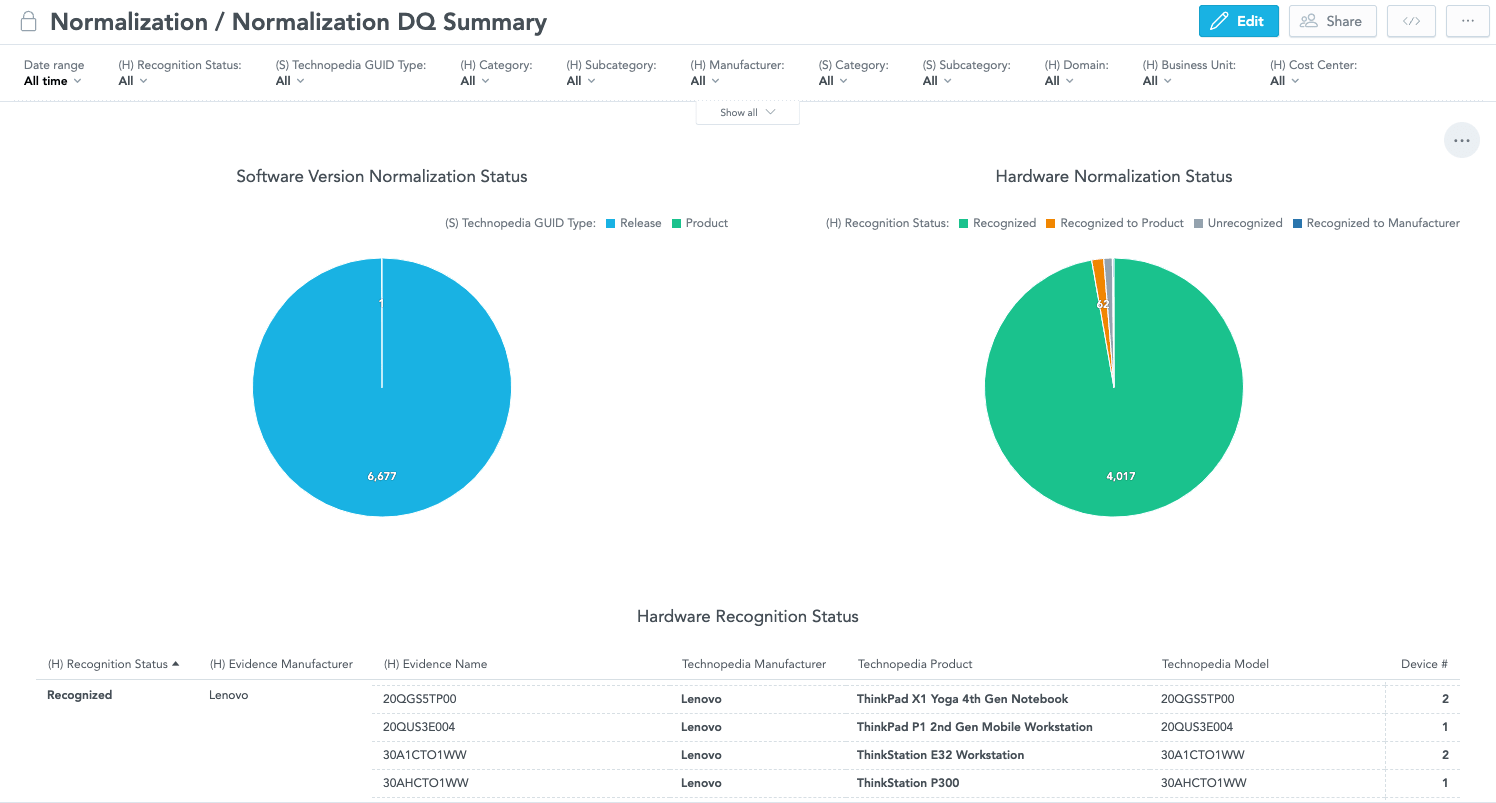
Example provided by Flexera One: IT Visibility
IT visibility is crucial in today's digital landscape
IT visibility is crucial in today's digital landscape
In today's fast-paced digital environment, organizations are constantly evolving, adopting new technologies and integrating more devices. This makes the IT landscape more complex and challenging to manage. IT visibility ensures that businesses can proactively manage, optimize and secure their IT resources. It fosters informed decision making, risk mitigation and strategic alignment with business goals. Whether it's understanding the usage patterns of a software application, monitoring the health of a server or securing a newly integrated IoT device, IT visibility provides the clarity and insights needed.
The future of IT visibility
The future of IT visibility
As technology continues to advance and the boundaries of what constitutes an "IT asset" expand, the importance of IT visibility will only grow. Organizations will need to adopt tools and strategies that offer deeper insights, more granular control and the ability to adapt to an ever-changing IT landscape.
